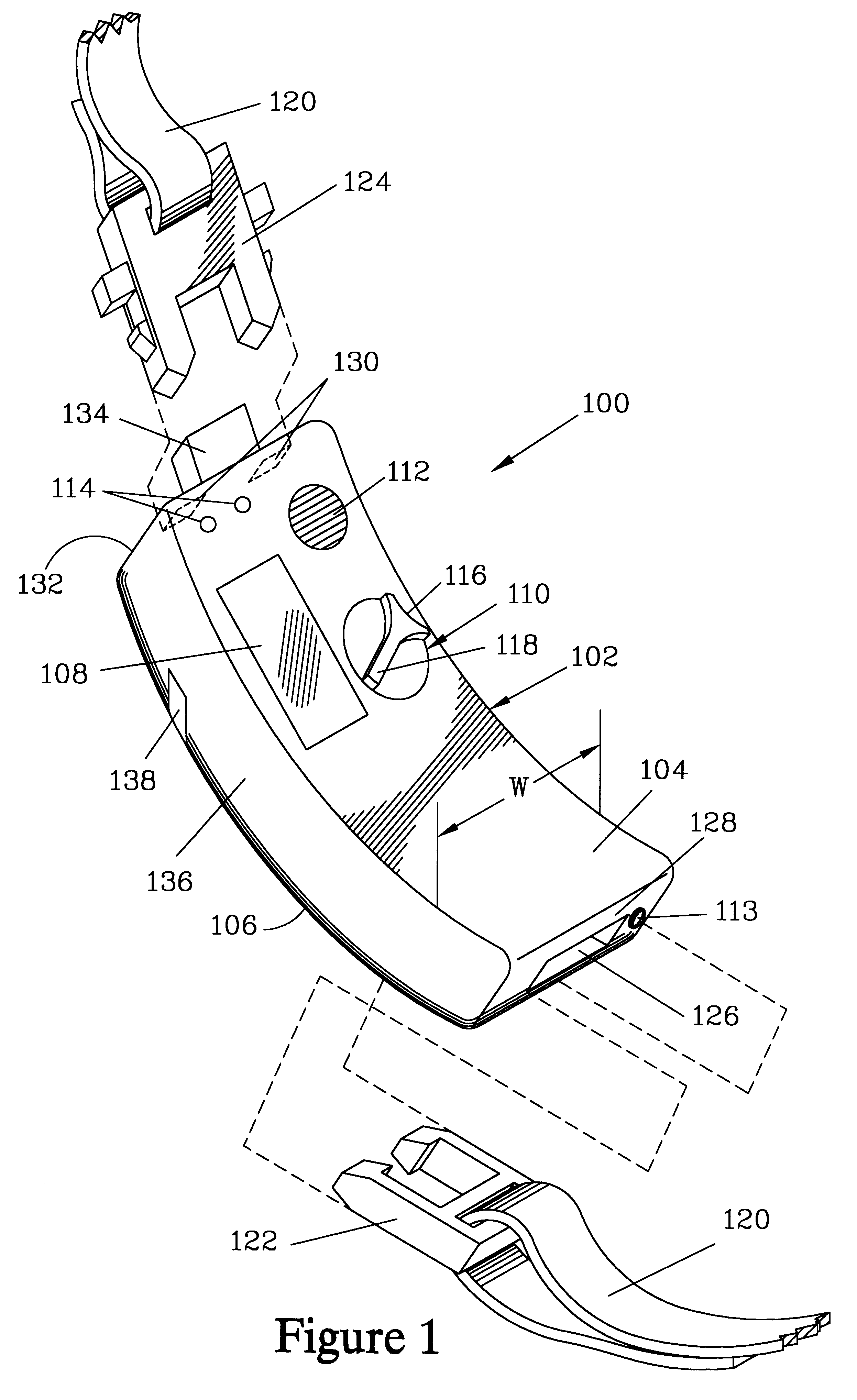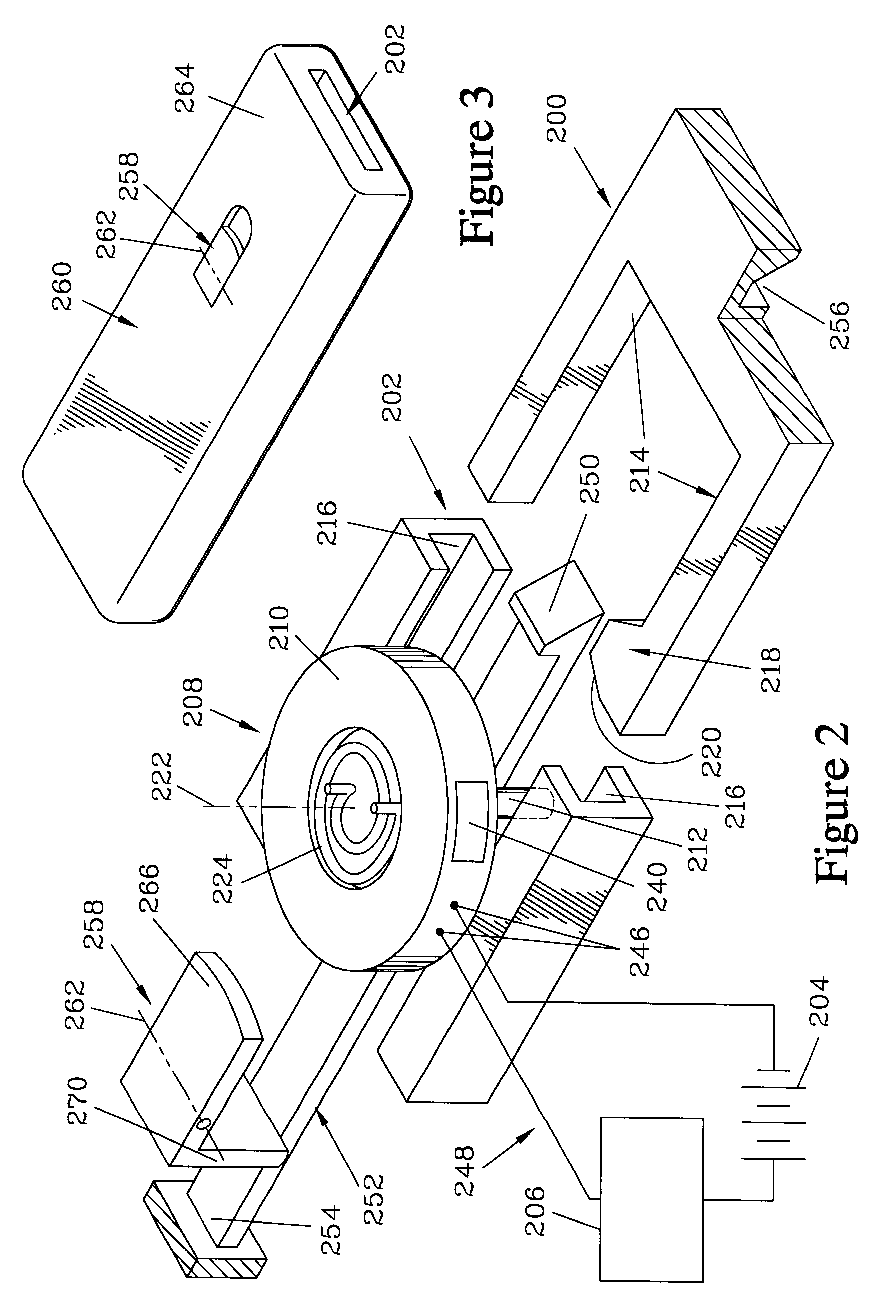Avalanche transceiver
a transceiver and avalanche technology, applied in the field of avalanche transceivers, can solve the problems of difficulty in locating rescuers, difficulty in inadvertently carrying the device with the power off or in the receive mode, and inconvenient belt attachment to the case in us
- Summary
- Abstract
- Description
- Claims
- Application Information
AI Technical Summary
Benefits of technology
Problems solved by technology
Method used
Image
Examples
Embodiment Construction
FIG. 1 is an isometric view of an improved rescue device 100 which includes a transmitter, an antenna, and a receiver (these internal elements are not shown) which are housed in a case 102. The case 102 is substantially shaped as a rectangular parallelepiped having a top surface 104 and a bottom surface 106 which form the bases of the parallelepiped. A viewing screen 108 for display of information to assist in locating a buried party is provided. The rescue device 100 also has a dial 110 for adjusting the sensitivity of the rescue device 100. A speaker 112 provides a complementary audio signal used in locating the buried party. A headphone jack 113 is preferably provided to allow a headphone to optionally replace the speaker 112. One or more display lights 114 are preferably provided, which provide information on the status of the search.
The case 102 of the rescue device 100 is preferably configured so as to be readily held and operated with a single hand. To facilitate such single-...
PUM
 Login to View More
Login to View More Abstract
Description
Claims
Application Information
 Login to View More
Login to View More - R&D
- Intellectual Property
- Life Sciences
- Materials
- Tech Scout
- Unparalleled Data Quality
- Higher Quality Content
- 60% Fewer Hallucinations
Browse by: Latest US Patents, China's latest patents, Technical Efficacy Thesaurus, Application Domain, Technology Topic, Popular Technical Reports.
© 2025 PatSnap. All rights reserved.Legal|Privacy policy|Modern Slavery Act Transparency Statement|Sitemap|About US| Contact US: help@patsnap.com



